A medieval manuscript containing sequels to the legend of King Arthur was repurposed for bookbinding material in the 16th century and forgotten — until it was rediscovered in the library at the University of Cambridge.
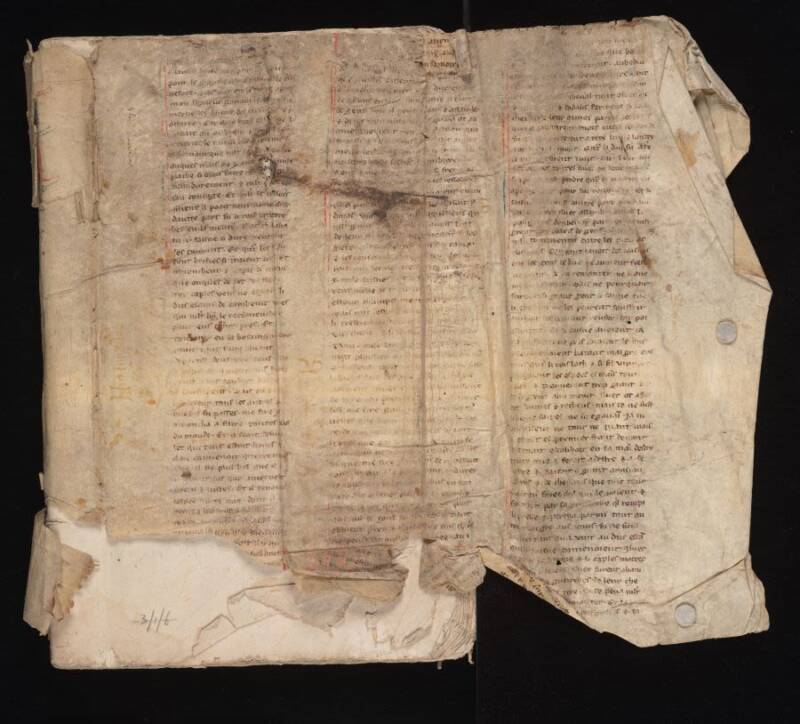
University of CambridgeThe medieval manuscript containing French-language sequels to the legend of King Arthur.
For centuries, the stories of King Arthur and his Knights of the Round Table at Camelot have stood among the most famous legends in Western history. First popularized in the 12th century, these stories have been revised and expanded from generation to generation, appearing in collections around the world.
However, it turns out that there are still new discoveries to be made when it comes to these iconic tales. Researchers surveying estate records at the Cambridge University Library recently uncovered an Arthurian legend manuscript hidden within the binding of a 16th-century property register.
Using high-tech imaging, scholars confirmed that the manuscript, dated to the 13th or 14th century and written in Old French, was a continuation of the Arthur legend. In the 16th century, it was scrapped and repurposed as bookbinding for property records, where it remained forgotten for centuries.
A Lost Medieval Manuscript Featuring Arthurian Legends Is Uncovered At Cambridge
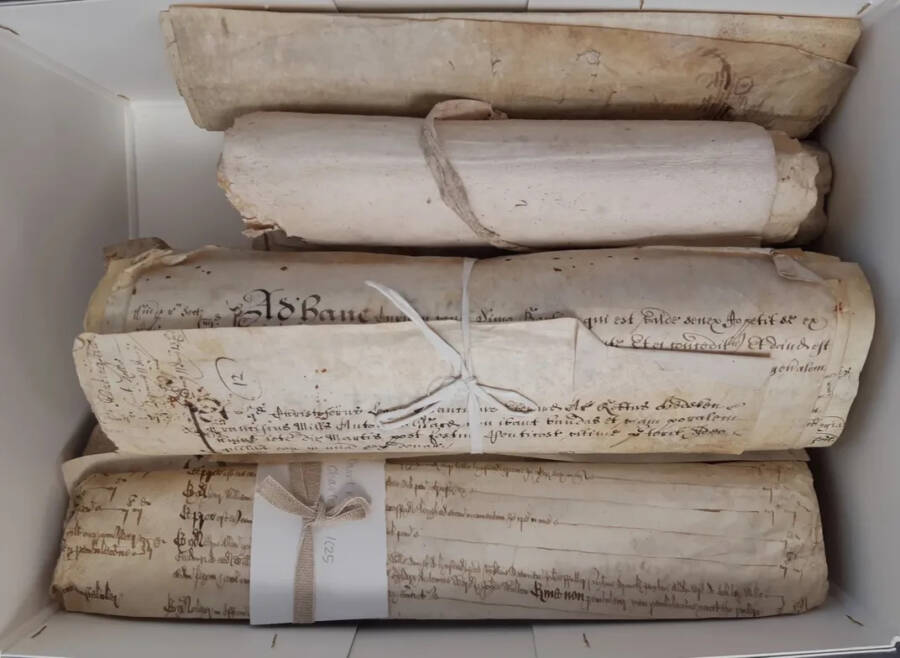
University of CambridgeThe manuscript was discovered in this box of scrolls.
In 2019, researchers browsing the Cambridge University Library for estate records discovered a box of scrolls containing property records dating back to the 16th century.
However, tucked away inside the records’ binding was an unreadable handwritten fragment. With their curiosity sparked, researchers then worked to reveal this elusive text.
Traditional methods of study would require physically unfolding and manipulating the fragment, putting the artifact at great risk of tearing due to its age. Not willing to risk potential damage, the researchers opted for a more high-tech option, one that would allow them to leave the fragment in situ — but digitally scan and unfold it.
“If this had been done 30 years ago, the fragment might have been cut, unfolded, and flattened. But today, preserving it in situ gives us a crucial insight into 16th-century archival practices, as well as access to the medieval story itself,” Dr. Fabry-Tehranchi, a French Collections Specialist at the library, stated in a press release from the university.
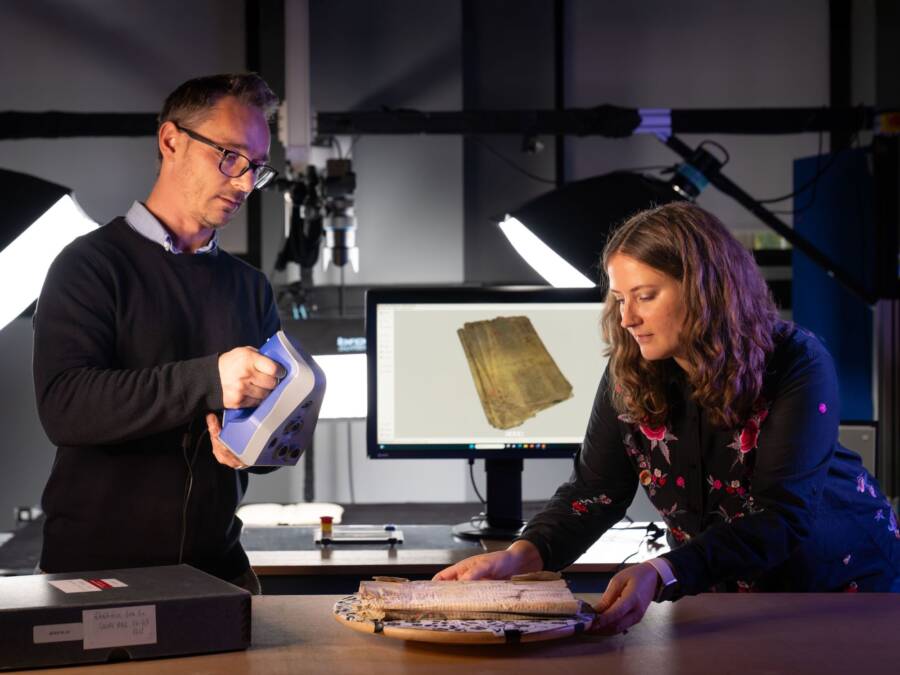
University of CambridgeResearchers Błażej Mikuła (left) and Amélie Deblauwe (right) scan the manuscript.
Using 3D scans and multispectral imaging, the research team revealed the fragment’s text — previously invisible to the naked eye — and were able to decode its contents under folds and obstructive binding stitches.
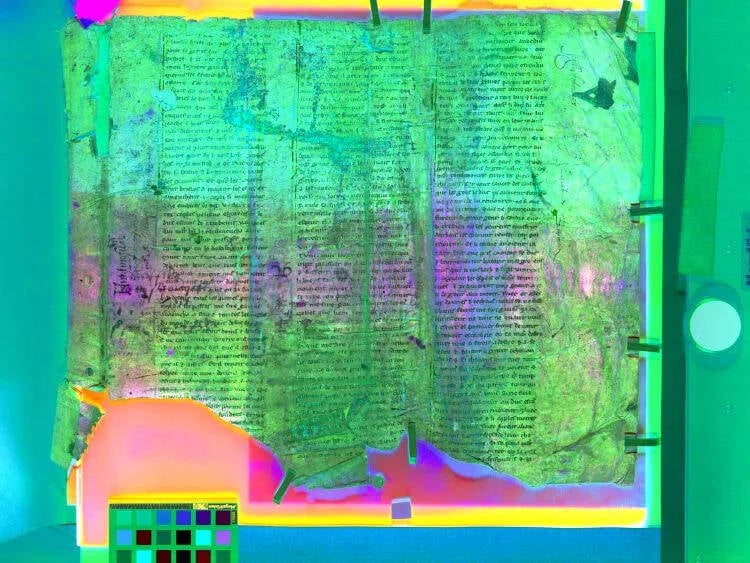
University of CambridgeMultispectral imaging revealed 16th-century annotations on the bottom left side of the manuscript.
Astonishingly, researchers realized that the fragment was an Old French tale involving King Arthur, the legendary English ruler who ascended to the throne after pulling the sword Excalibur from a stone — an act that could only be done by the rightful king of England.
Since the 12th century, the legend of King Arthur has been one of Europe’s most famous tales. And with this most recent finding, the story has taken on a new life.
How The Suite Vulgate du Merlin Expands The Mythology Of Arthur And His Knights

Public DomainKing Arthur, by Charles Ernest Butler (1903).
The story of King Arthur dates as far back as the 5th century, when Welsh poets and storytellers began speaking of a legendary king of the Britons who fought valiantly against Saxon invaders.
In the 12th century, historian Geoffrey of Monmouth wrote his History of the Kings of Britain, popularizing the tale of Arthur and adding iconic details like Excalibur, the Knights of the Round Table, and Sir Lancelot.
Various additions to the story would appear over the centuries, adding new court drama, romance, and tales of bravery.
This most recently discovered manuscript, written between 1275 and 1315, was once part of the Suite Vulgate du Merlin, a sequel to the legend of King Arthur written in Old French. The story, including tales of Sir Lancelot and the Holy Grail, was a bestseller in its time.
“The Suite Vulgate du Merlin tells us about Arthur’s early reign, his relationship with the knights of the Round Table and his heroic fight with the Saxons,” Dr. Fabry-Tehranchi explained to the BBC. “It really shows Arthur in a positive light. He’s this young hero who marries Guinevere, invents the Round Table and has a good relationship with Merlin, his advisor.”
In the first story, Sir Gawain, a knight who faces off with Germanic Saxons, wields Excalibur to defeat his enemies. In the second, King Arthur and his court hold a banquet, where Merlin makes his entrance before then joining the king in battle.
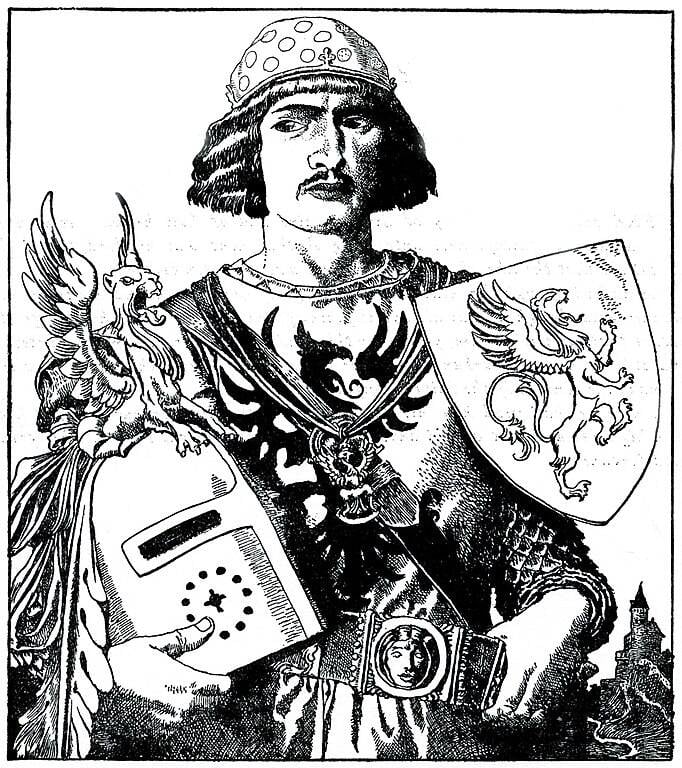
Wikimedia CommonsSir Gawain, one of the most famous Knights of the Round Table, and star of more than a dozen Arthurian legends.
Today, fewer than 40 manuscripts of the Suite Vulgate du Merlin have been found. This particular copy survived intact until the 16th century, before it was folded, torn, and stitched to make a binding for a book containing property records.
By the 16th century, British readers still enjoyed the legend of King Arthur, but they preferred it in their native English. Older versions of the story in French became increasingly obsolete, likely explaining why this manuscript was repurposed as bookbinding.
Now, not only has this manuscript given researchers an invaluable opportunity to study medieval manuscript craftsmanship and the evolution of the Arthurian legend, but it has also proven the success and viability of using cutting-edge technology to examine fragile historical artifacts.
After reading about this rediscovered Arthurian legend, view 37 surprisingly raunchy images from medieval manuscripts. Then, discover 37 astounding facts about the Middle Ages that will make you glad to live in the 21st century.





